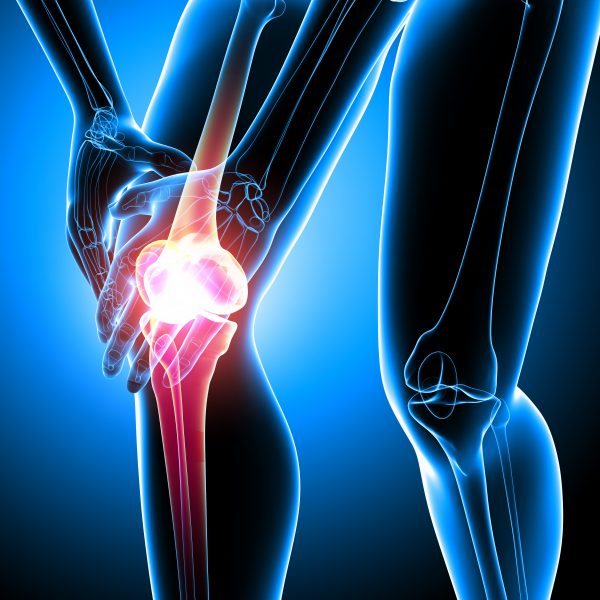An antidepressant for arthritis?
Pathological chondrocyte hypertrophy contributes to osteoarthritis (OA), a degenerative disease of the cartilage and bone. Carlson et al. studied the role of G protein–coupled receptor kinase 2 (GRK2), which is linked to cardiac hypertrophy, in OA. GRK2 was elevated in chondrocytes in mouse models of OA and in injured human cartilage, and genetic deletion of GRK2 decreased OA progression in mice. Treating chondrocytes with the antidepressant paroxetine, which inhibits GRK2, blunted disease progression and chondrocyte hypertrophy in mice in vivo and human OA cartilage ex vivo. Results show how repurposing paroxetine could have therapeutic effects for joint degeneration.
Abstract
Osteoarthritis (OA) is a debilitating joint disease characterized by progressive cartilage degeneration, with no available disease-modifying therapy. OA is driven by pathological chondrocyte hypertrophy (CH), the cellular regulators of which are unknown. We have recently reported the therapeutic efficacy of G protein–coupled receptor kinase 2 (GRK2) inhibition in other diseases by recovering protective G protein–coupled receptor (GPCR) signaling. However, the role of GPCR-GRK2 pathway in OA is unknown. Thus, in a surgical OA mouse model, we performed genetic GRK2 deletion in chondrocytes or pharmacological inhibition with the repurposed U.S. Food and Drug Administration (FDA)–approved antidepressant paroxetine. Both GRK2 deletion and inhibition prevented CH, abated OA progression, and promoted cartilage regeneration. Supporting experiments with cultured human OA cartilage confirmed the ability of paroxetine to mitigate CH and cartilage degradation. Our findings present elevated GRK2 signaling in chondrocytes as a driver of CH in OA and identify paroxetine as a disease-modifying drug for OA treatment.







